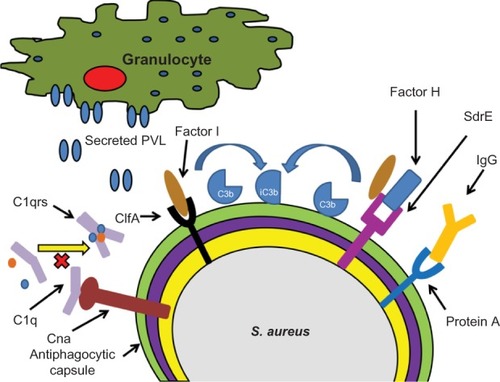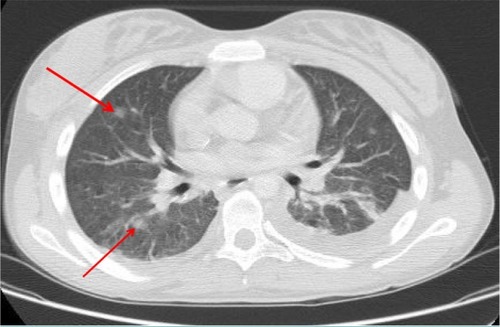Figures & data
Figure 1 A schematic depiction of selected Staphylococcus aureus mechanisms for immune evasion.
Notes: Cna interacts with C1q preventing formation of the C1qrs complex. ClfA and SdrE each promote Factor I mediated conversion of C3b to iC3b. Protein A is depicted binding to the Fc region of IgG preventing immunoglobulin opsonization.
Abbreviations: ClfA, staphylococcal clumping factor A; Cna, collagen adhesin; IgG, immunoglobulin G; PVL, Panton–valentine leukocidin; SdrE, S. aureus surface protein.

Figure 2 Computed tomography chest image with contrast of a 19-year-old female with relapsed neuroblastoma, Staphylococcus aureus bacteremia, and pulmonary nodules (arrows) that were initially concerning for invasive fungal disease.
Notes: The patient was initially started on amphotericin and then underwent biopsy of the lesions. Both culture and histopathology revealed S. aureus; Amphotericin was discontinued without the development of other evidence of fungal disease.

Table 1 Reported types of Staphylococcus aureus infection by transplanted organ
